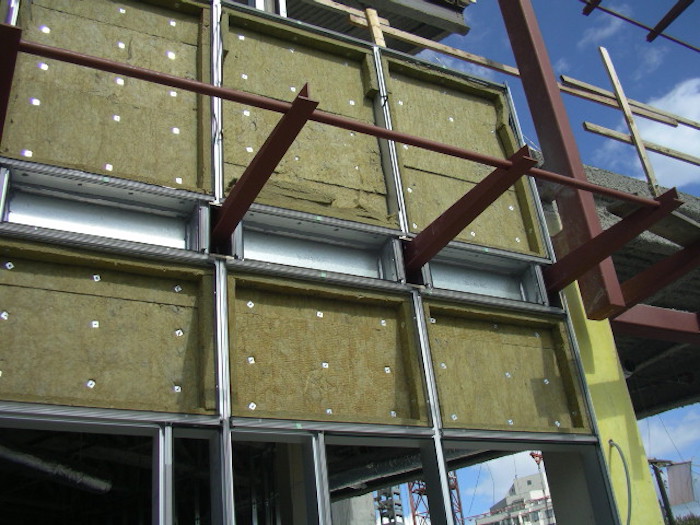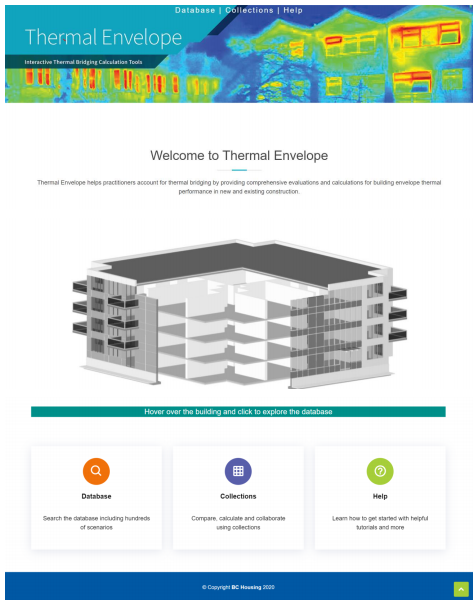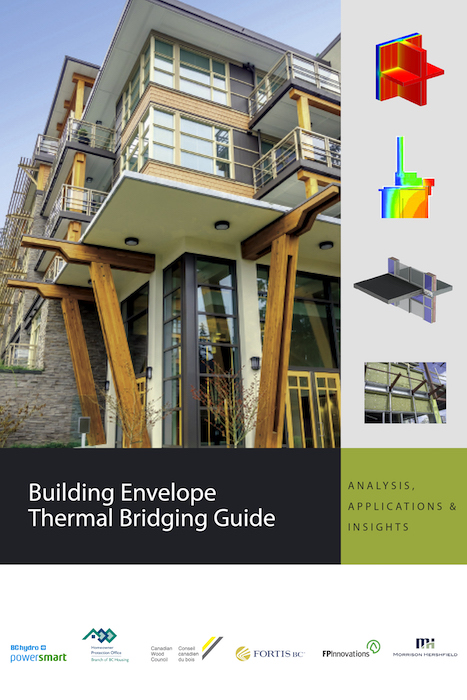
2021 #CCEawards Showcase: The Building Envelope Thermal Bridging Online Database
November 21, 2021
By CCE
“Making all this data public will help a lot of people start at the right place and reduce the energy impact of a lot of buildings in Canada.” – Jury
Category: Special Projects
Award of Excellence Winner: Morrison Hershfield
Morrison Hershfield, in partnership with BC Housing and project sponsors, expanded the Building Envelope Thermal Bridging (BETB) Guide to include details applicable to all Canadian climates and energy codes and developed a first-of-its-kind online database.
ThermalEnvelope.ca was developed for users to easily search for building envelope details, compare approaches to mitigate thermal bridges and calculate the overall thermal transmittance of opaque wall assemblies, roofs and floors. These tools can play an important supporting role in achieving net-zero design and implementation within the Canadian construction industry.
An expanded resource
The industry is now undergoing significant changes to improve the overall energy performance of buildings. The National Energy Code for Buildings (NECB) aims to achieve net-zero energy consumption for all new buildings in Canada by 2030. To reach this ambitious goal, the industry requires new tools to affordably design and build such high-performance buildings.
Prior to the launch of the BETB Guide in 2014, the impact of thermal bridges was largely overlooked in practice, energy standards and energy calculations. Their impact is now clearer and comprehensive thermal bridging calculations are becoming a requirement in codes and standards across the country—including NECB 2017, BC Energy Step Code, Vancouver Building By-law (VBBL) and Toronto Green Standard (TGS) Version 3—as well as internationally. The BETB Guide has become an important resource for thermal bridging calculations.
The expanded BETB Guide and new online database aim to transform the building market by facilitating the design and construction of more thermally efficient building envelopes. Migrating the expanded guide to a web-based platform has minimized the need for project-specific thermal simulations, making calculations less onerous in practice.
The database at ThermalEnvelope.ca provides a streamlined, automated process to find more than 500 common building envelope assemblies and interface details, perform and review calculations, provide compliance documentation and collaborate with design teams. Users can search for and compare details using such criteria as construction type, insulation characteristics, proprietary systems and desired performance level.
This new and expanded resource moves beyond climate and construction practice in British Columbia and is now applicable to all energy standards and climates in Canada. It also provides details applicable for net-zero or Passive House (PH) design, all of which is timely and necessary, given new and contemplated changes to energy efficiency requirements across the country, along with federal, provincial and territorial government commitments to reducing greenhouse gases (GHGs) under the Pan-Canadian Framework on Clean Growth and Climate Change.
A global and national issue
Buildings consume large amounts of electricity and natural gas. Designing and constructing energy-efficient buildings and improving conservation in existing buildings can lead to large reductions in energy consumption and related GHG emissions.
In Canada, space heating is a particularly significant source of energy consumption and GHG emissions for commercial, institutional and residential buildings. Building envelope thermal performance is a critical consideration for reducing space heating loads.
According to the World Green Building Council (WorldGBC), the building sector has the greatest potential to significantly reduce GHG emissions, compared to other major emitting sectors; the total savings could be as much as 84 gigatonnes of CO2 by 2050, through such direct measures as energy efficiency, fuel switching and renewable energy. The building sector has the potential to achieve energy savings of 50% or more by 2050.
Collaborative process
When designing the online database, the challenge was to not simply replicate the Portable Document Format (PDF) version of the BETB Guide on a website, but rather to create an enhanced, intuitive user experience that includes all the features one would expect when calculating the thermal performance of a building envelope.
The user interface, functionality and features were defined from scratch, based on the team’s technical expertise and feedback received throughout a multi-year process, which included many presentations and workshops with industry stakeholders.
The expansion of the BETB Guide, identification of details and development of the web application were collaborative processes, seeking to meet the needs of stakeholders across the industry and the country to ensure the tool would be as inclusive and effective as possible. The result is an intuitive database that consolidates vast amounts of technically sophisticated and complex information, a catalogue of more than 500 common building envelope assemblies and interface details, along with their associated thermal performance data, into an accessible, practical and easily understandable tool that allows practitioners to make informed design decisions. It is applicable to all energy standards and climates in Canada, with the potential for future expansion.

The multi-year development process was highly collaborative, involving workshops and presentations to increase awareness and solicit feedback.
Timely delivery
New buildings designed and built to higher standards of energy efficiency benefit the industry, building owners and occupants and society in general. The timing of this online database is ideal in the context of new regulations that require detailed thermal transmittance calculations to minimize thermal bridging and the demand from industry for objective and consistent information regarding building envelope thermal performance.
This project supports policy already in place in several provinces and provides a cornerstone for developing model energy codes and adopting net-zero energy-ready codes by NECB by 2030.
The Building Envelope Thermal Bridging Online Database, Burnaby, B.C.
Award-winning firm (prime consultant): Morrison Hershfield, Burnaby, B.C. (Ruth McClung, EIT; Ivan Lee, P.Eng.; Felipe Merino Gordo, MASc.; Fabio Almeida, EIT; Barilelo Nghana, M.Eng.; Neil Norris, P.Eng.; Katie Hay, P.Eng.).
Owner: British Columbia Housing Management Commission (BC Housing).
Other key players: Evoke (technical lead and project manager), Open Technologies (web developer).


